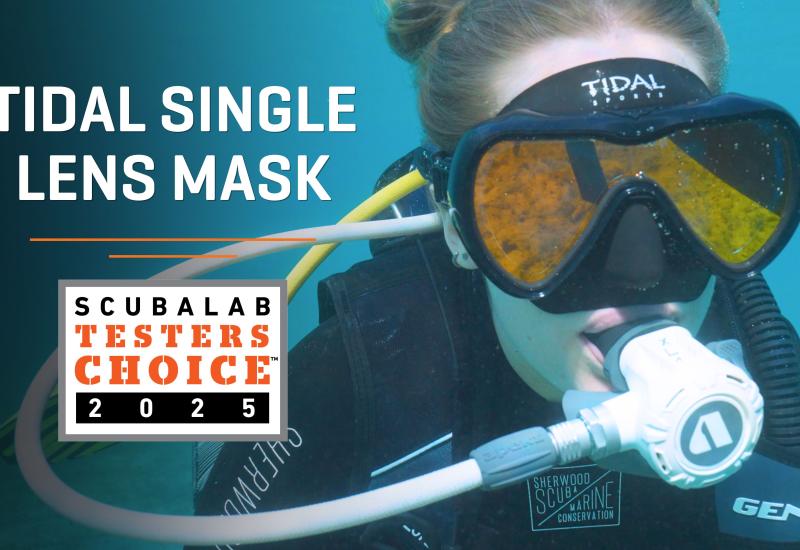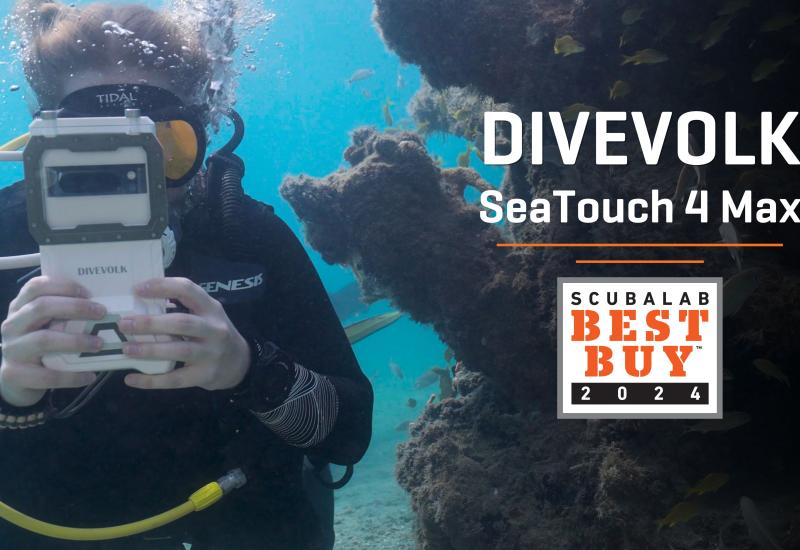Scuba Diving BCs: Behind The Scenes of ScubaLab's 2017 Gear Review
In March, ScubaLab headed back to Blue Grotto for our annual BC test. Our team of scuba divers put 13 new jacket-style and back-inflation BCs through their paces. Take a look at these behind the scenes photos to see our test divers in action and we'll share some of the latest trends that we noticed in this year's batch of scuba diving BCs.
You can read the results in ScubaLab's 2017 BC Review.

John Michael BullockNew BCs, Oh Buoy!
ScubaLab tested out the latest BCs at Blue Grotto Dive Resort in Wiliston, Florida.
How ScubaLab Tests BCs
For the ergonomic test, scuba divers were equipped with an underwater slate and recorded their observations about each BC’s performance, and assigned scores from 5 (excellent) to 1 (poor) in each of the following categories:

John Michael BullockSnug and Secure
Sport Diver's Managing Editor Andy Zunz dons and adjusts the fit for a BC before entering the water at Blue Grotto.
- ASSEMBLY Ease and security of tank and hose attachments
- LOADING WEIGHTS Ease of loading integrated-weight system
- COMFORT AND ADJUSTABILITY Both in and out of the water
- ATTITUDE AND STABILITY Control and security in swim, vertical and other positions
- CARGO POCKETS Access, closures and capacity
- VALVE OPERATION Inflating by power and manual inflator, and exhausting with all dump valves
- ASCENT CONTROL Ability to maintain proper ascent rate and attitude
- SURFACE FLOATING Comfort and security at the surface
- DITCHING WEIGHTS Ability to drop weights quickly and easily without fear of accidental ditching
ScubaLab also conducted three in-water objective tests (in fresh water) on each BC to measure criteria important to performance and safety.
- FLOW-RATE TEST We tested the ability of each BC’s exhaust system to prevent uncontrolled ascent in the event of a stuck power inflator. At 10 feet of depth, each BC while loaded with 20 percent of the manufacturer’s claimed buoyant lift was held upright while the power inflator and left upper exhaust were simultaneously activated for 20 seconds. Industry standards require that at the conclusion, a BC has not become positively buoyant.

John Michael BullockWhat A Dump
Test divers evaluated the effectiveness of the exhaust valves and pull dumps on the BCs.
BUOYANT LIFT Each BC (in size medium unless otherwise noted) was fully inflated with the power inflator while mounted upright to a neutrally buoyant bucket. The bucket was then progressively weighted until the BC would not support another pound without sinking.
INHERENT BUOYANCY To determine how a BC’s built-in buoyancy would affect weighting requirements, each BC (in size medium unless otherwise noted) was submerged, with care taken to remove all air from the air cell, pockets, padding, etc. Weights were then added in half-pound increments until the BC would support no further weight without sinking.

John Michael BullockSizing Up the Competition
Multiple sizes of each BC were available so test divers could accurately evaluate the fit and comfort.
Detail Oriented
What are BC makers doing to increase security, convenience and durability? Here are a few examples from our latest test batch.
- The ratcheting tank-band lock on Atomic Aquatics’ BC1 operates similarly to the binding on a ski boot; flip the handle back and forth (click, click, click) until the band is snug, then press it down to lock in place. The less mechanically inclined among test divers took a little longer to master it, but it cinched up tight without the manhandling that nylon web bands can require.

John Michael BullockNo BC Left Unturned
Test divers evaluated the stability of the BCs in various positions —including upside down.
- Adding more D-rings, loops, grommets, etc., is one thing. Getting them where a scuba diver wants them is another. Along with its fixed D-rings, Tusa’s Soverin-Alpha has a couple of detachable connectors, sort of like industrial-strength safety pins, that let you easily move D-rings around between several attachment points on the top and bottom of both front panels and the left shoulder strap.

John Michael BullockTest Time
Deputy Editor Mary Frances Emmons enters the water at Blue Grotto for the ScubaLab BC test.
- Self-sealing zippers used on the BC1 have covers on the teeth that meet when the zipper is closed to block sand and debris from getting into the moving parts. The BC1 has them on cargo pockets and integrated-weight pockets. The zippers have a smooth profile that helps keep them from snagging, or scratching your wrists when you reach into the pockets. They also look cool.
A Closer Look
Manufacturers’ R&D teams came up with a few thoughtful design features on their new back-inflation BCs. Here’s a handful that caught our attention.
- Modular connectors on the Aqua Lung Outlaw are the humble mainstay for this BC’s sizing and air-cell flexibility. While Aqua Lung was fine-tuning early prototypes of the BC, “we began working with modular components but didn’t have a place to use them,” says CEO Don Rockwell. “Then we tried them on the Outlaw.” Like the marriage of peanut butter and jelly, the current Outlaw configuration was born. Swapping out components is easy, thanks to the robust plastic connectors that keep everything secure; they release easily with any simple tool.

John Michael BullockFirst Impressions
ScubaLab Director Roger Roy makes some notes during the ScubaLab BC test.
If you’ve ever had a weight pocket slip out from your BC, you’ll appreciate the Mares Bolt’s Slide & Lock System, which uses a red and green indicator to show weight pockets are locked. “The locking mechanism is based on mechanical interference and doesn’t rely on elastic deformation of parts or elastic action of a spring,” says Steve Lamphear, vice president of Mares.
If you like rear-inflate BCs but not their paltry storage space, Cressi Ace’s cargo pockets will float your boat. Like the BC, “the pockets’ ‘air-net’ material doesn’t absorb excess water,” says R&D manager Pietro Micillo.

John Michael BullockMischief Managed
Managing Editor Melissa Smith takes some notes during the ScubaLab BC test at Blue Grotto.

John Michael BullockTest Team Supervisor
Test team supervisor Tom Wuest collects and organizes the test divers' data and keeps things running smoothly.
Staying Neutral
BC makers have done a good job paring inherent buoyancy from BCs in recent years, even in full-featured models with substantial padding. None of the BCs in this year’s test had excessive amounts of inherent buoyancy. But with test divers trying multiple BCs back to back, even relatively small differences in inherent buoyancy were noticeable, with divers noting they had to add a bit of lead for BCs with a little more built-in float.

John Michael BullockBuddy Up
ScubaLab test divers Krysta and Jeremy Kern take notes while testing BCs at Blue Grotto

John Michael BullockGoing Up, Sir
ScubaLab Director Roger Roy evaluates a BCs ability to make a safe and controlled ascent.










